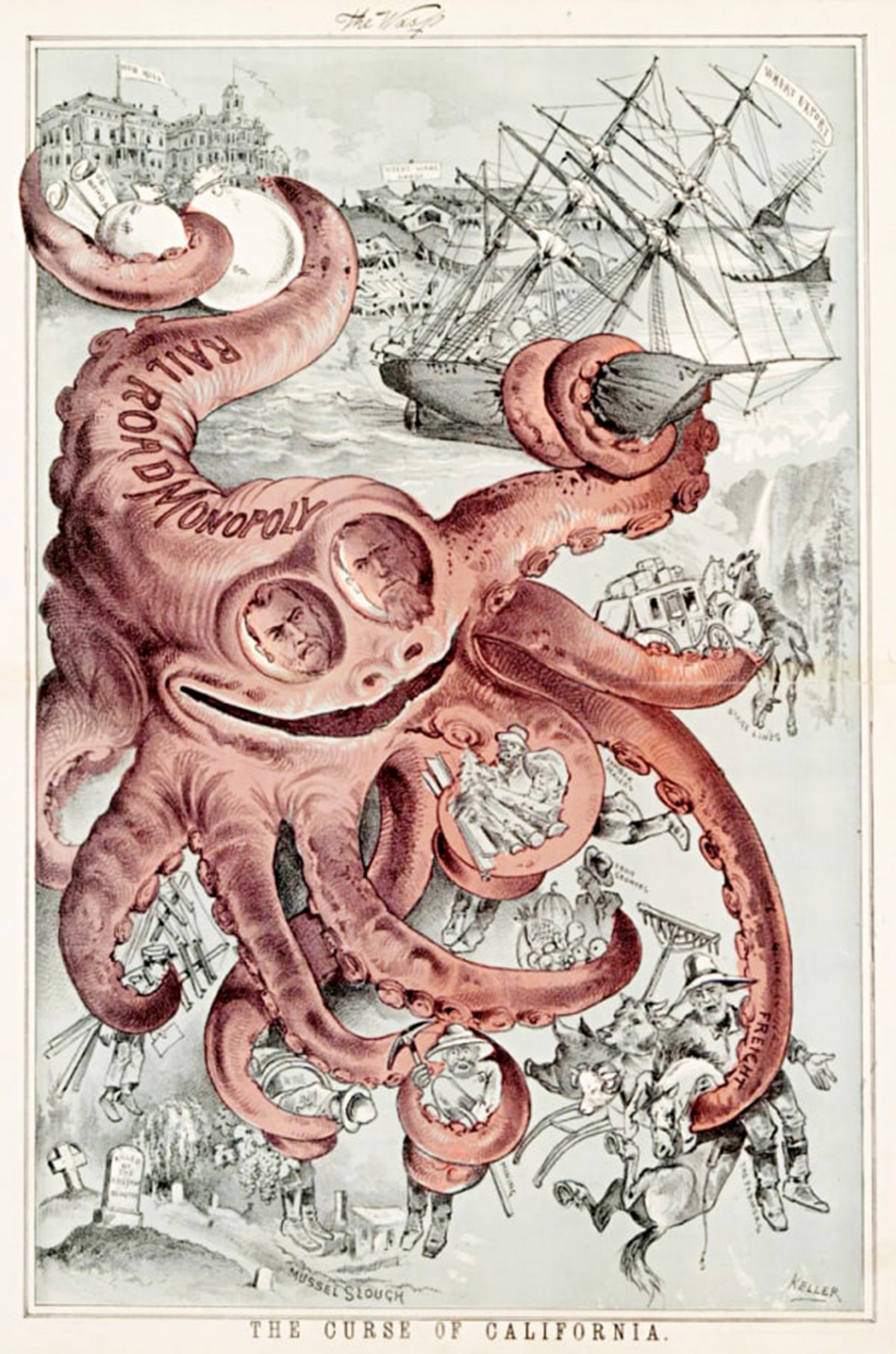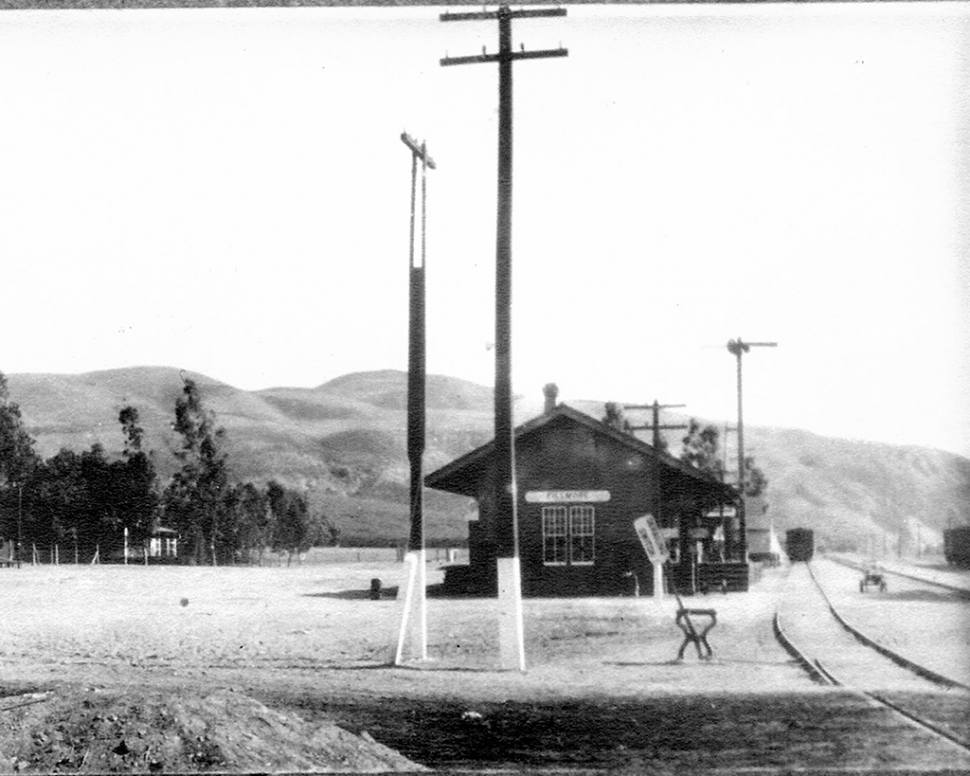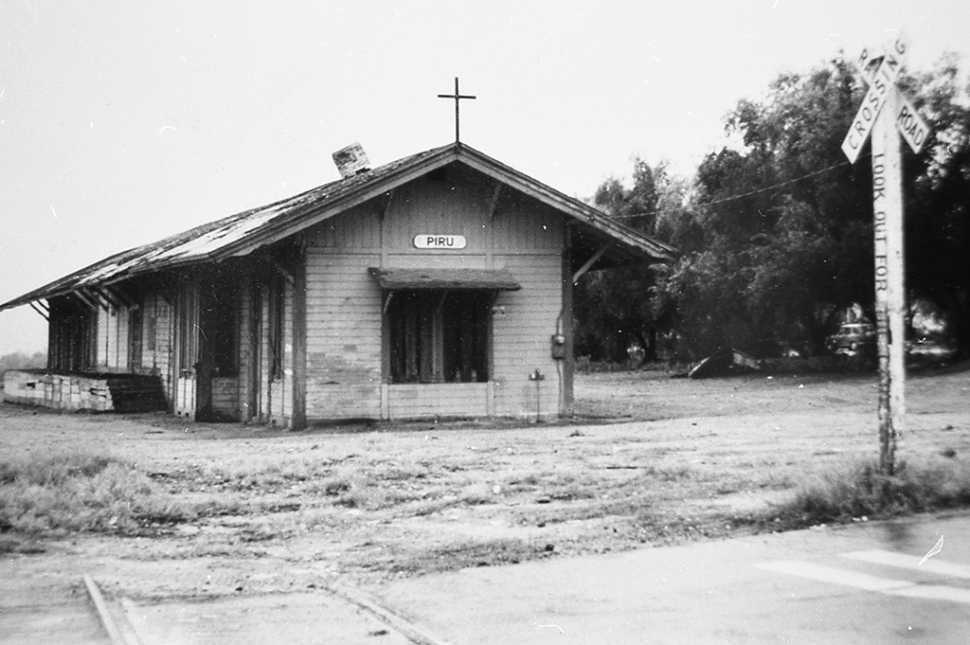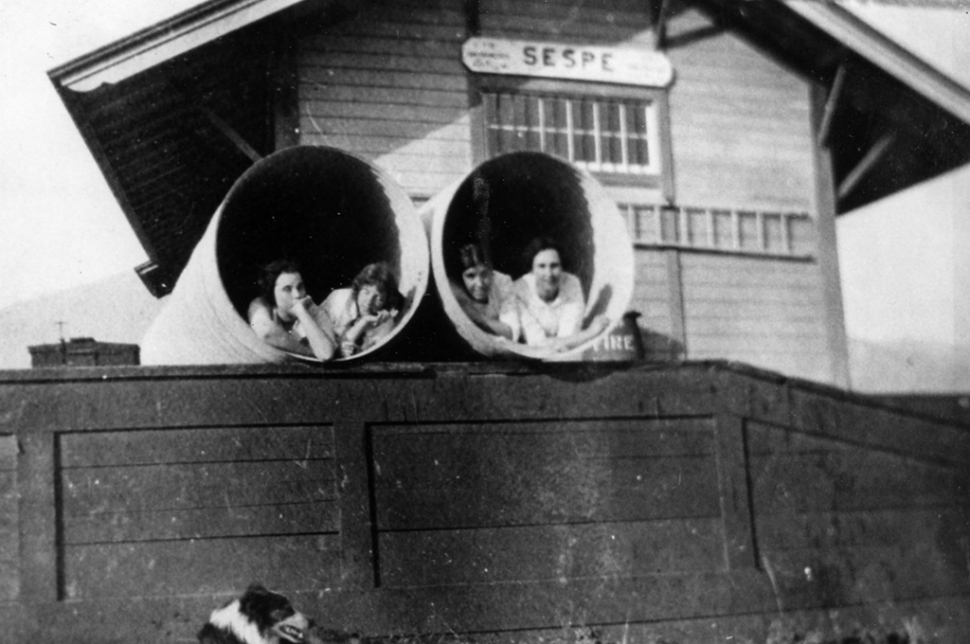|
The Arrival of the Southern Pacific Railroad
 "The Octopus" by G. Frederick Keller in The Wasp, 1882, courtesy Bancroft Library, which portrayed controlling all aspects of the California Economy. Courtesy Fillmore Historical Museum. By Gazette Staff Writers — Wednesday, August 18th, 2021
 The Fillmore Depot in 1887, which is when the Southern Pacific Railroad came to the Santa Clara River Valley. Photos Courtesy Fillmore Historical Museum.   Courtesy Fillmore Historical Museum The arrival of the Southern Pacific Railroad to the Santa Clara River Valley in 1887 changed the face of the valley forever. The Southern Pacific Railroad was founded in 1865 and was controlled by the “Big Four”: Mark Hopkins, Leland Stanford, Collis Huntington and Charles Crocker. They also owned the Central Pacific which met the Union Pacific at Promontory, Utah, in 1869 completing the transcontinental railroad. The Southern Pacific linked San Francisco to Los Angeles by rail through the Central Valley in September of 1876. By 1880, they had built track to Tucson, Arizona. Over the next decades, the Southern Pacific not only absorbed the Central Pacific Railroad but many other lines throughout the United States. Within California, the Southern Pacific and the “Big Four” become dominating factors in the economy and politics of the State. By 1882, the Southern Pacific was portrayed by G. Frederick Keller in The Wasp, as an octopus controlling all aspects of the California Economy. By 1886, the Southern Pacific was ready to build a coast route between Los Angeles and San Francisco. Their surveyors had already surveyed the area around Saugus and were familiar with the Santa Clara Valley. With no major rivers or mountains to cross, this was seen as a relatively easy route. Thomas Bard, a major landowner and businessman in Ventura County, wanted a different route. His route would have gone across the San Fernando Valley to Santa Susanna Pass and on to Hueneme. To accomplish this, tunnels would have to be dug through the Santa Susanna Mountains between current day Chatsworth and Simi Valley. In 1884 he had a surveyor stake out a route from Hueneme, through his ranch lands over the Santa Susanna Pass. This would have included a tunnel 4,000 feet in length. Bard proposed this route to the Southern Pacific, even offering inducements such as free right of way across his property. The route through the Santa Clara Valley was easier to do, which meant cheaper. Despite Southern Pacific having good engineering and financial reasons for choosing the Santa Clara Valley route, Bard became a sworn enemy of the company, eventually running against and beating the Southern Pacific candidate for a US Senate seat in 1900. Eventually in 1904, the Southern Pacific did build a line through the Santa Susanna Mountains with a 7,300-foot tunnel. This would become the primary route between Los Angeles and San Francisco. Prior to the railroad, property in the valley was owned by a few large ranchos such as Rancho Camulos, and the remains of Rancho Santa Paula y Saticoy and Rancho Sespe. The only towns in the valley were Santa Paula and Saticoy. The area was slowly being sold off in smaller parcels. When it became clear that the Southern Pacific would be coming through the area, several new town plans were laid out including Piru, Sespe, Bardsdale, and Fillmore. In 1881, Reginald del Valle of Rancho Camulos ran for Congress against Col Henry Harrison Markham, who was backed by the Southern Pacific. Not surprisingly del Valle lost the election and found himself in debt. To clear his debts, he sold the Temescal Land Grant in 1887 to David Cook of Chicago. Piru was the project of Cook who, after making his fortune as a printer of religious tracts, came to California for his health. He purchased property from the Del Valles of Rancho Camulos on which to build his “Garden of Eden”. With the death of T. Wallace More Rancho Sespe was divided among his heirs who quickly sold off the property. The eastern part of Rancho Sespe came into the possession of the Hull Family of Chicago. The Hulls along with Pacific Improvement Company, laid out the town Sespe. Bardsdale was laid out by Royce Surdam on property purchased from the More heirs by Thomas Bard. He may not have liked the Southern Pacific Railroad but could see the potential of owning property along its route. Bardsdale was based on the idea that the railroad route would be south of the Santa Clara River. The remaining portion of the More property was purchased by Sespe Land and Water Company and became the town of Fillmore. In August of 1886, work began in earnest on the railroad line between Saugus and Ventura, 53 miles. The route would have to cross the lesser fork of the Santa Clara River, Piru and Sespe Creeks and several lesser creeks. Eventually there would be ten steel bridges on the eastern 37 miles of the line. There would be several train stations along the route. The railroad had standard plans for the depots they built and they would vary with the size of the community. If there was not housing available for the staff, a two story structure would be built with accommodations upstairs. The first train station west of Saugus would be at Rancho Camulos. On December 2, 1886, the first locomotive reached Camulos. In 1888, David Cook appealed to Charles Crocker for a second station at Piru, which was refused. In response, Cook built his own train station and staffed it himself. The Southern Pacific originally wanted the next station to be at Cienega (near the current State Fish Hatchery) where Rush Ealy owned a stagecoach stop. Ealy refused to sell the property, so the Southern Pacific purchased right of way west of Cienega from the Sespe Land and Water Company who obligingly named their new town “Fillmore” after Jerome A. Fillmore who was then the general manager of the Southern Pacific “south of Oregon and west of El Paso. In January, 1887, the first train crossed the Sespe Bridge. Another depot was built at the planned town of Sespe, with stops later added for the brownstone quarry and the Spalding home at Rancho Sespe. After Sespe, Santa Paula would be the next actual depot. With the coming of the Southern Pacific came more settlers. The town of Sespe was never realized due to the growing town of Fillmore. The hope of a flourishing Bardsdale died when the railroad route went north of the Santa Clara River. David Cook returned to Chicago in 1900, Piru never became the “Second Garden of Eden” but is an unincorporated community today. |
